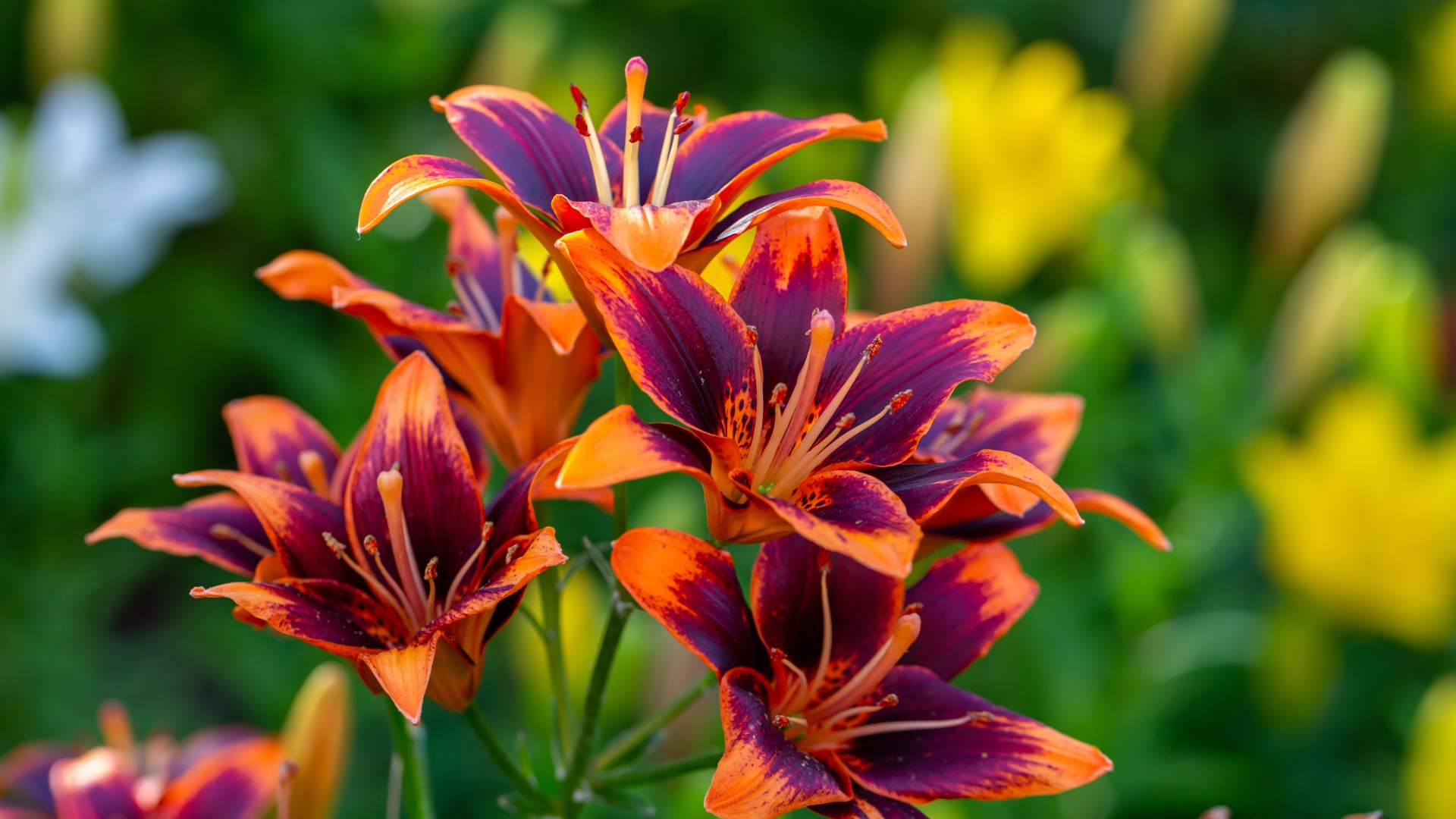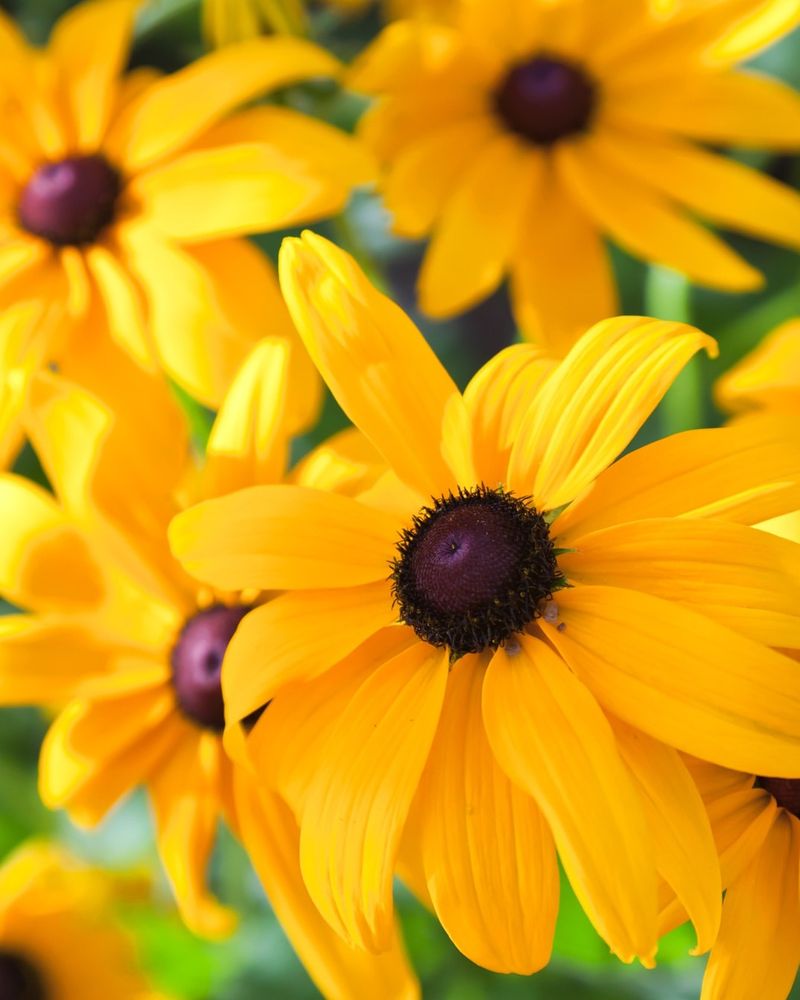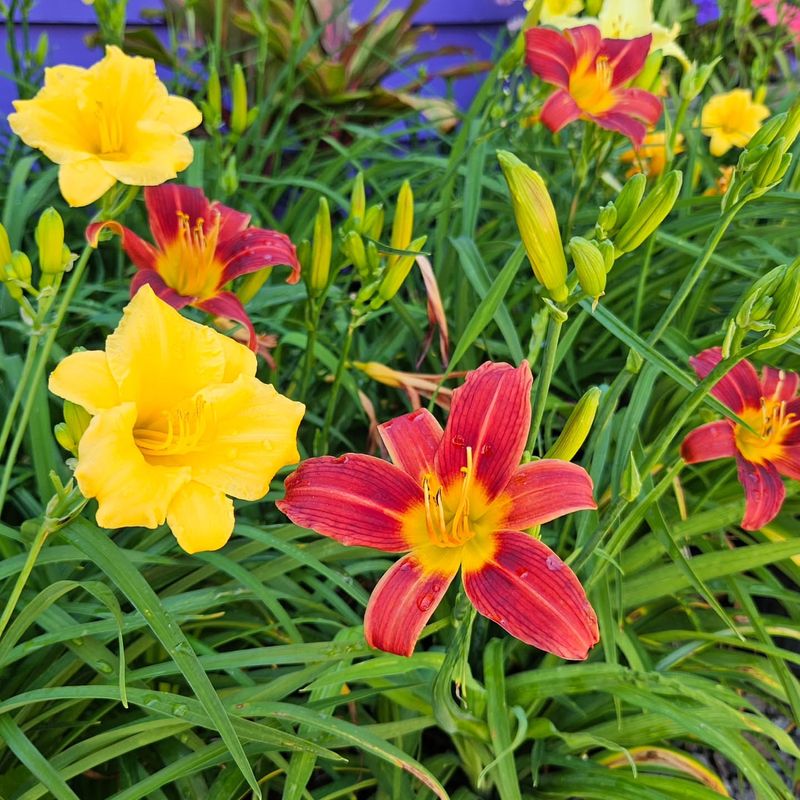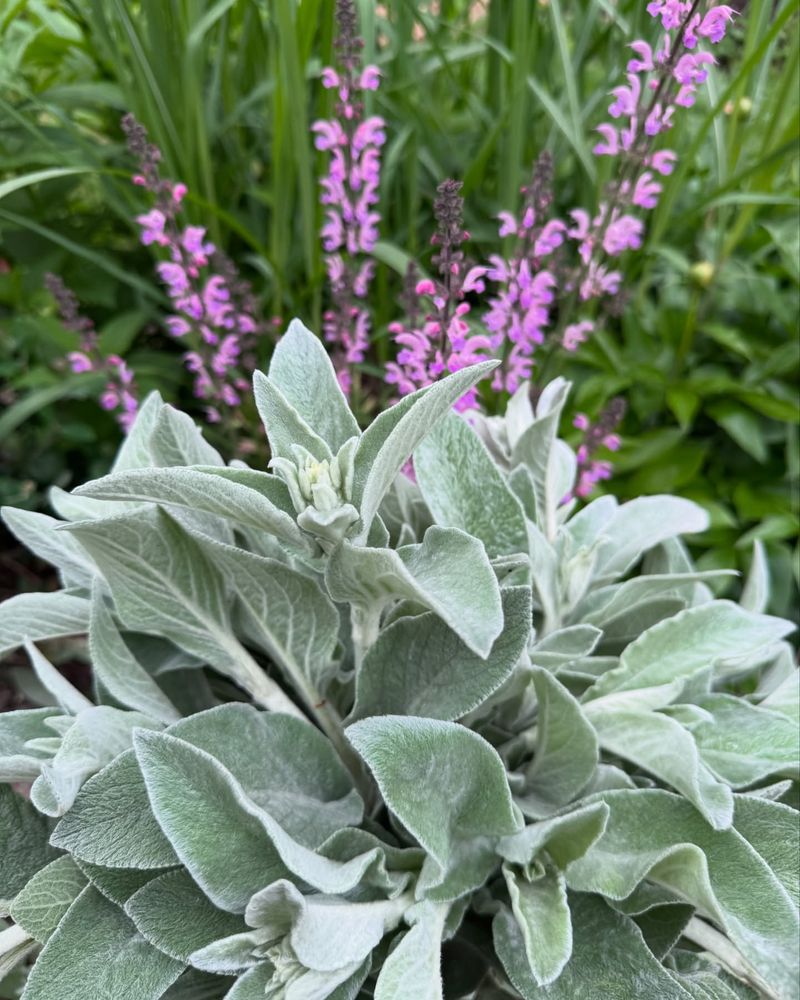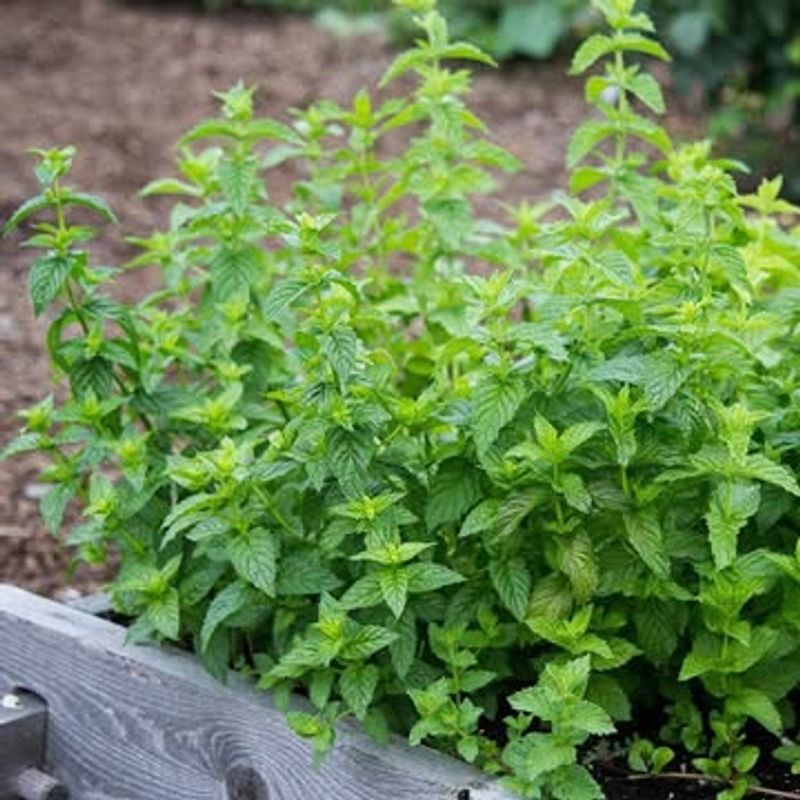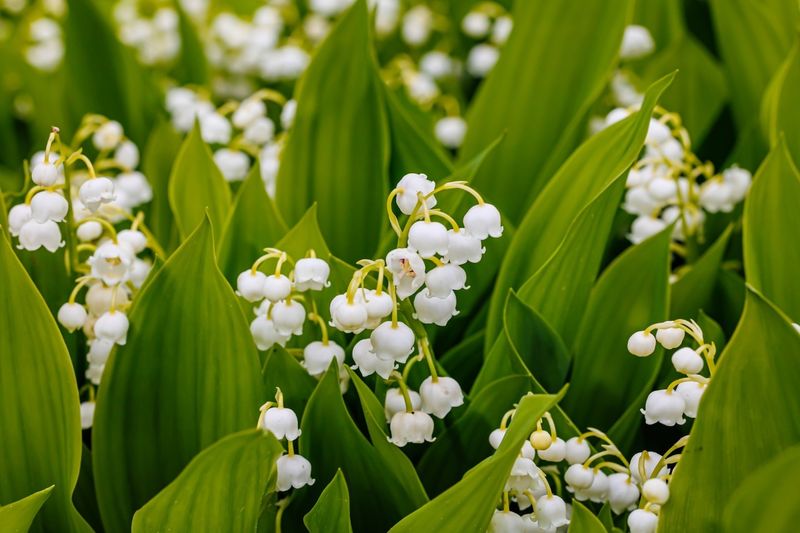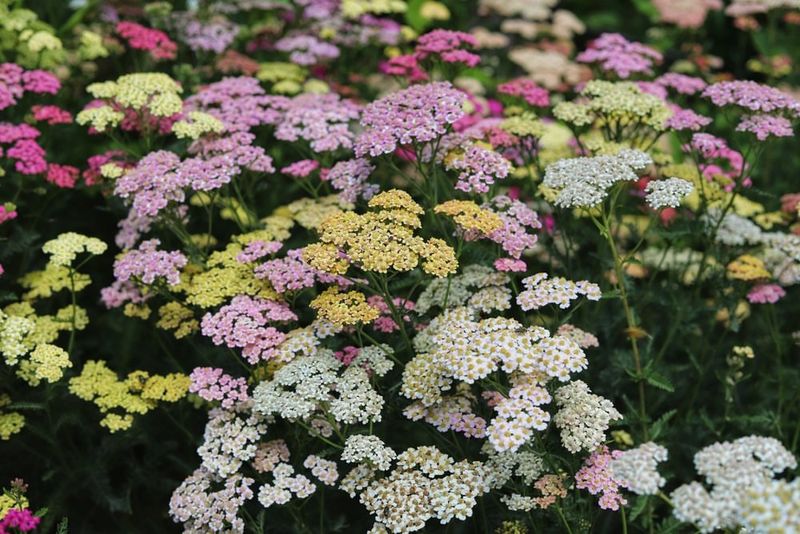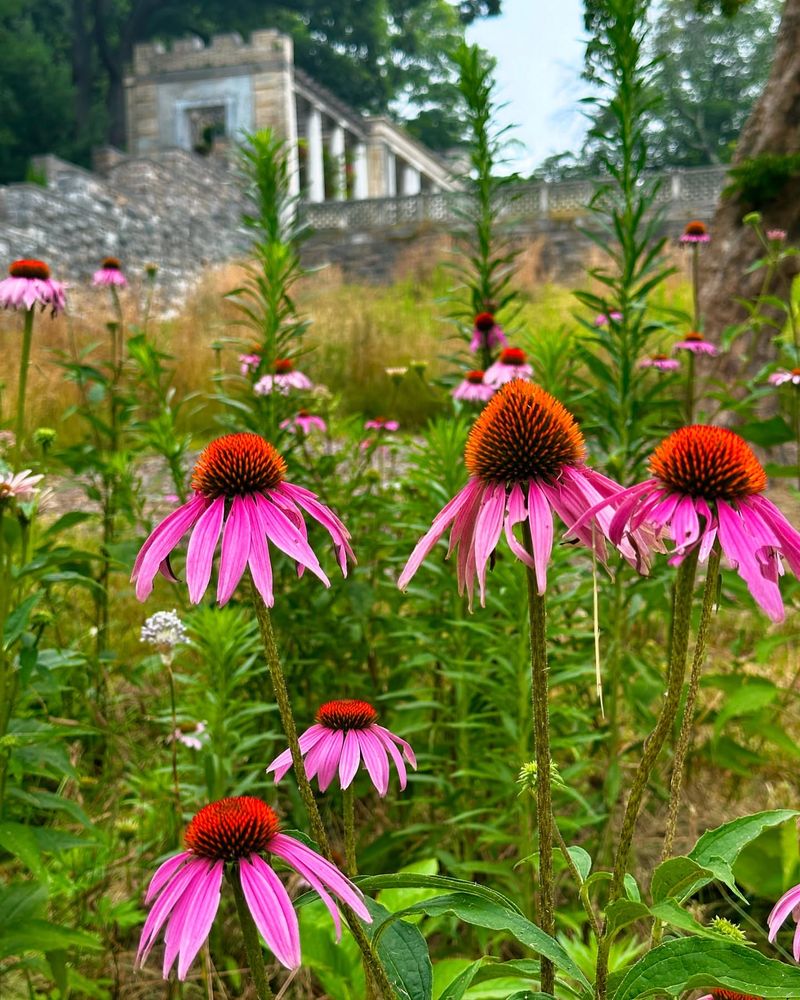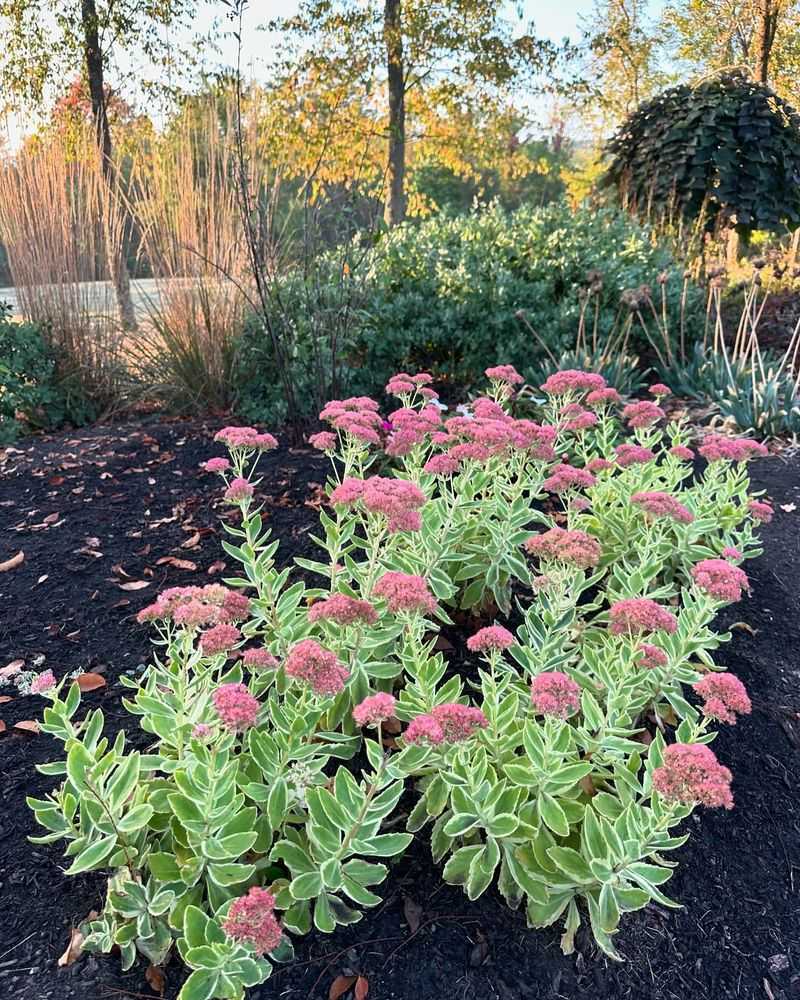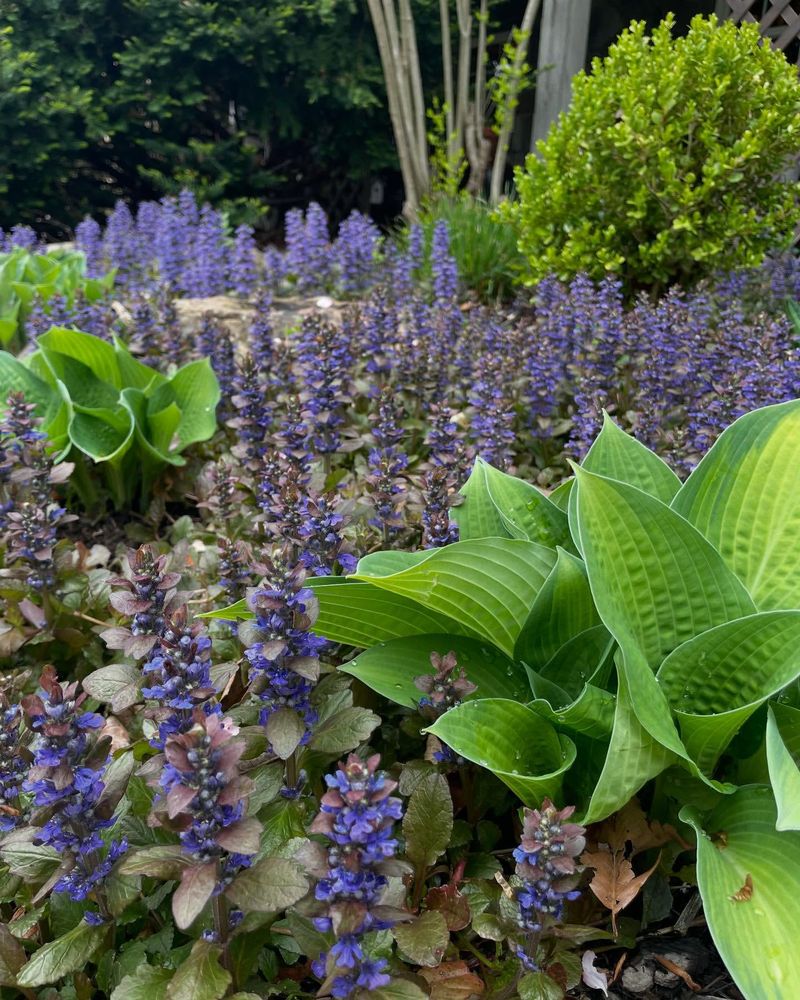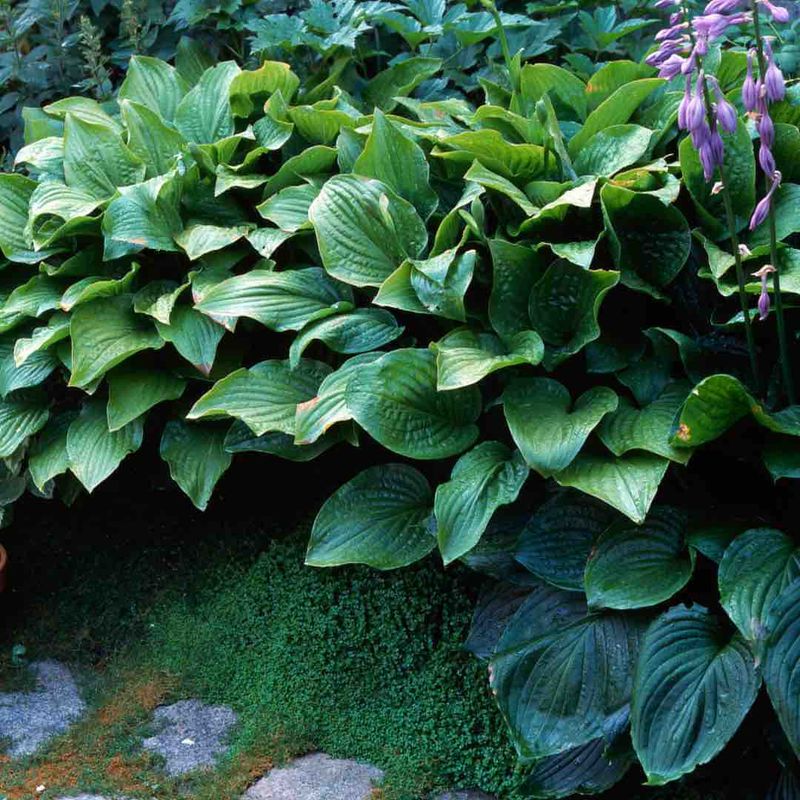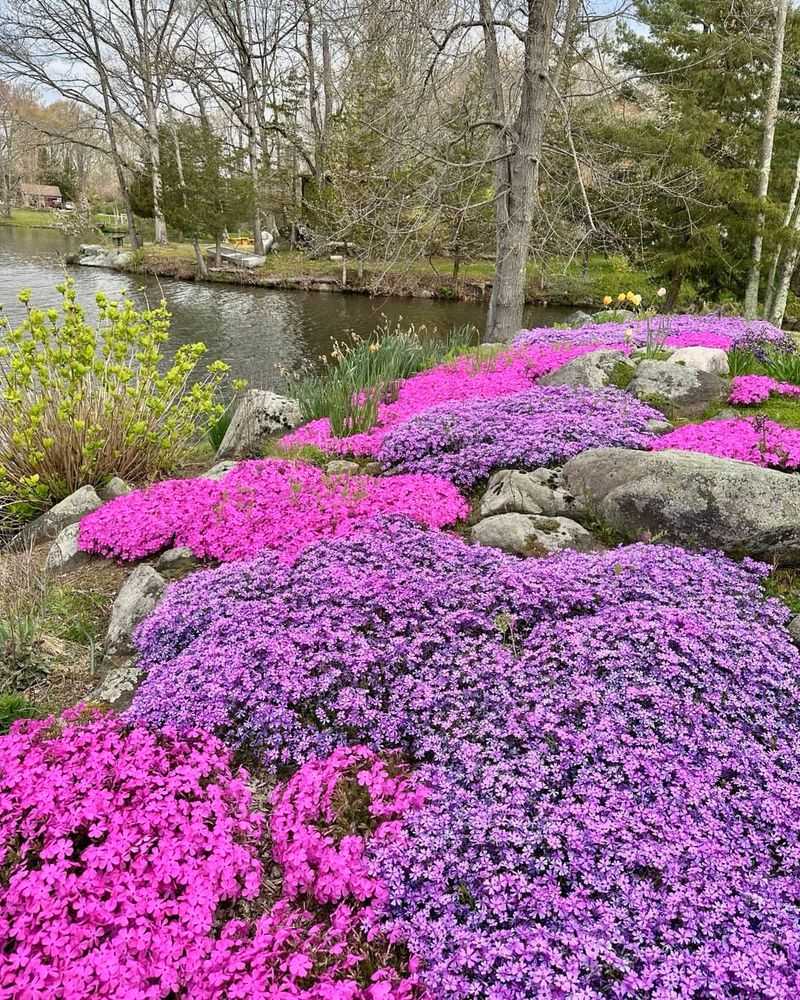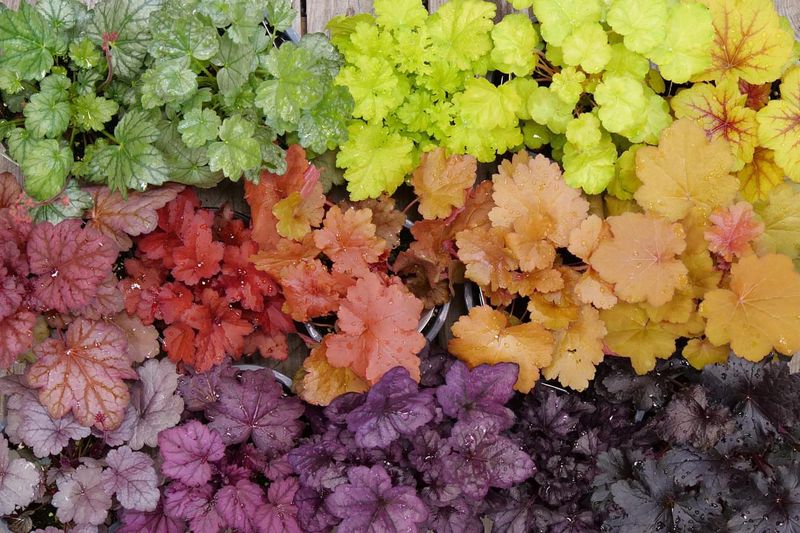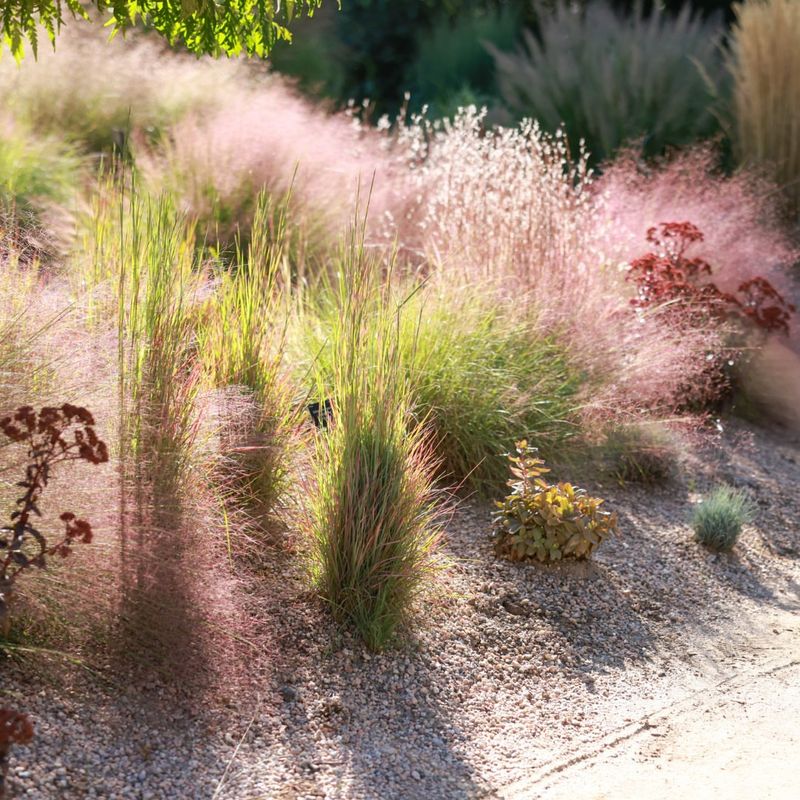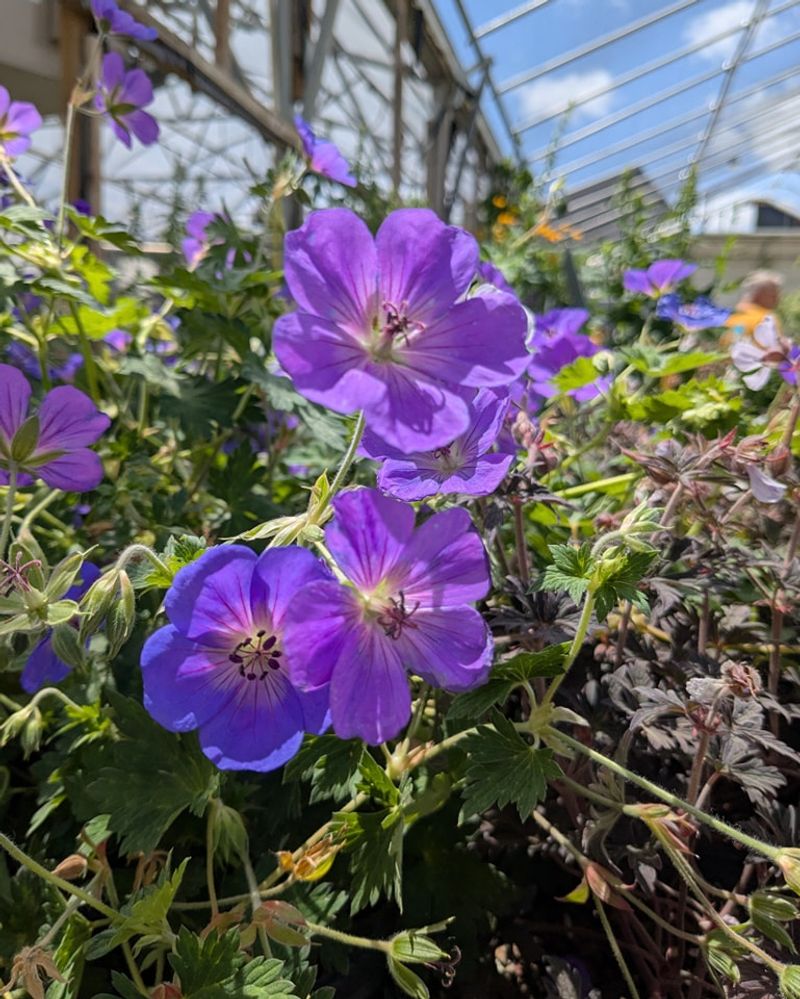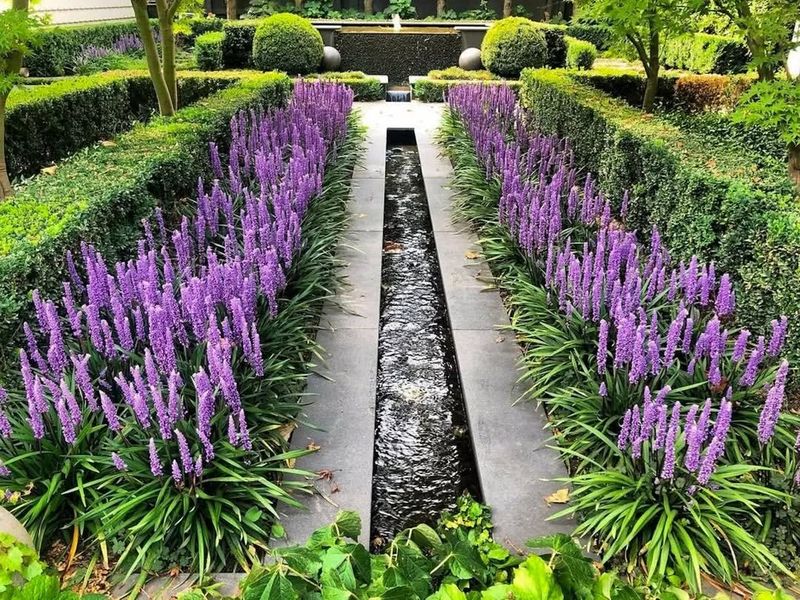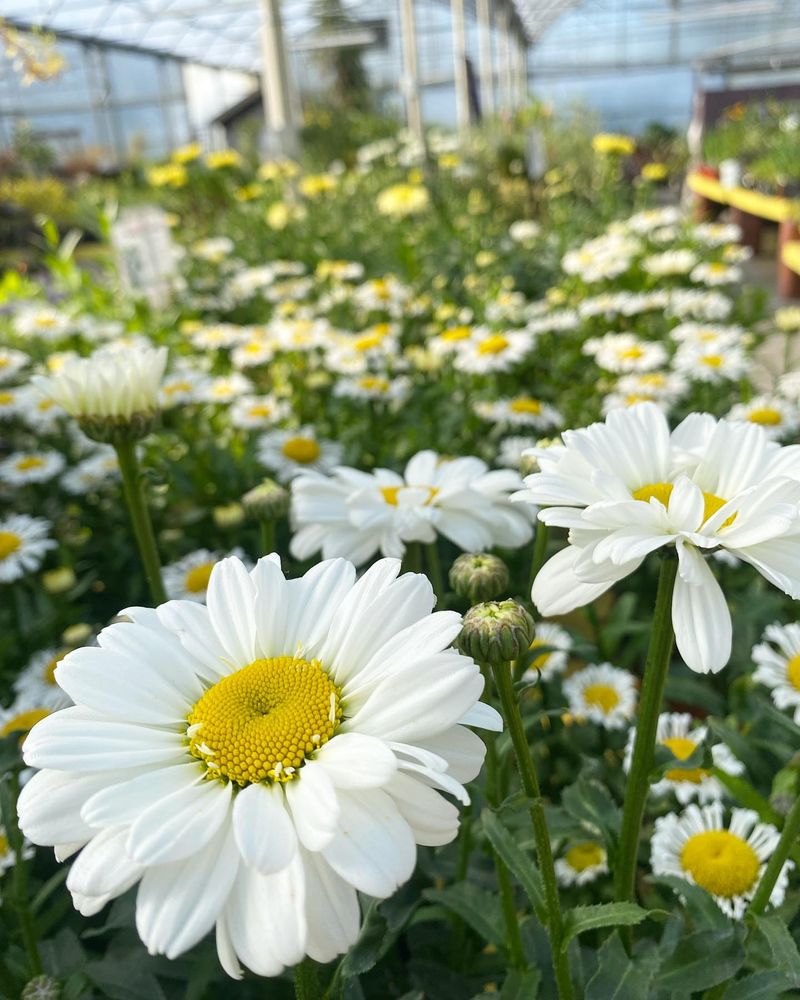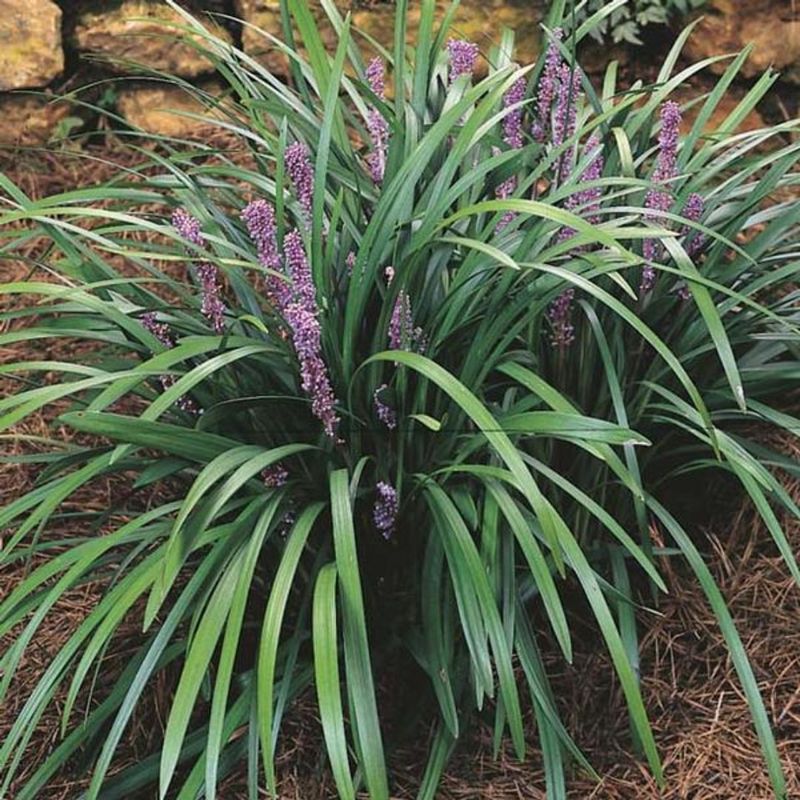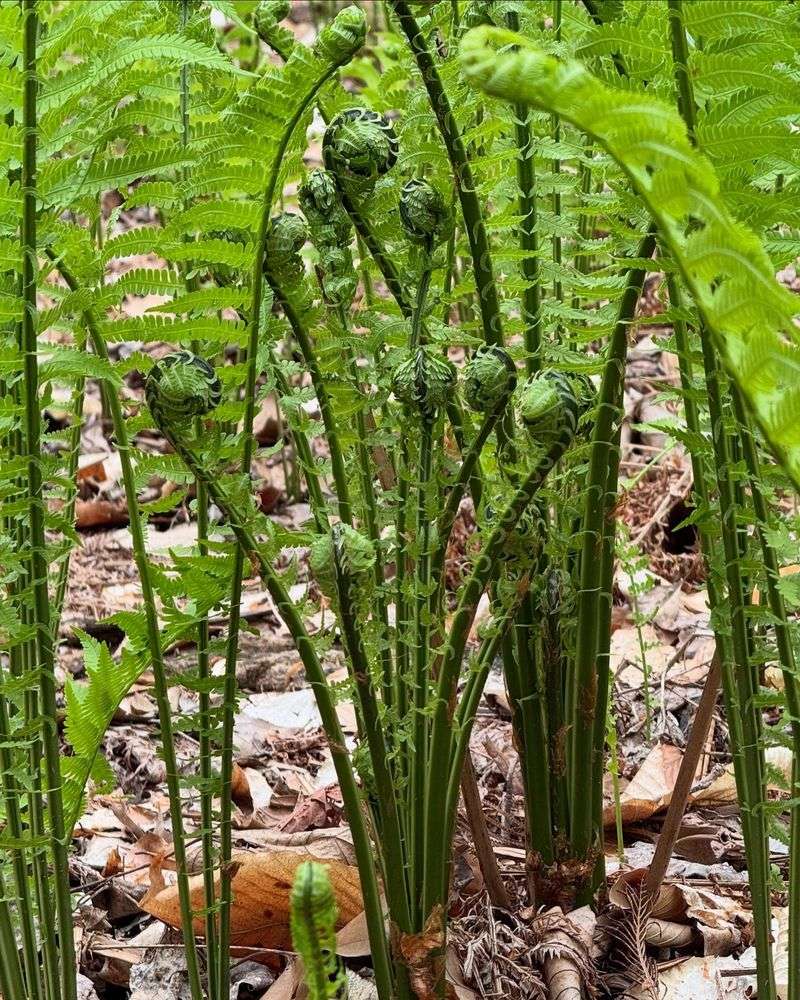Some perennials don’t just grow—they spread their magic all on their own. These hardworking plants multiply naturally, filling your garden with more beauty each year without extra effort.
I love watching my garden slowly take over with these reliable growers. They’re perfect for anyone who wants a fuller, richer yard without constantly replanting.
And to sweeten the deal, I’m throwing in 10 bonus plants that do the same — because who doesn’t love a little extra green?
1. Black-Eyed Susan
Sunny yellow petals surround distinctive dark centers, making these native wildflowers instantly recognizable. They scatter seeds with abandon, creating new patches of golden blooms each summer.
Pollinators adore these drought-tolerant beauties, and you’ll love how they fill empty spaces. Cut spent flowers to control their enthusiasm or let them naturalize for a meadow-like effect.
2. Daylily
Hardy champions of the perennial world, daylilies form expanding clumps that can double in size yearly. Their fleshy roots multiply underground, creating new fans of strappy leaves topped with trumpet-shaped blooms.
Available in countless colors beyond the common orange, these low-maintenance plants thrive almost anywhere. Divide overcrowded clumps every few years to maintain vigor and share with fellow gardeners.
3. Lamb’s Ear
Velvety silver leaves create a soft, touchable carpet that gradually expands outward. Children love running their fingers across the fuzzy foliage that feels exactly like its namesake.
This drought-tolerant ground cover sends out short runners, establishing new plants at their tips. Tall purple flower spikes appear in summer, attracting bees while the spreading foliage chokes out weeds.
4. Mint
Aromatic and vigorous, mint’s underground runners can quickly colonize vast areas if left unchecked. The fresh scent released when brushing against leaves makes it worth containing this enthusiastic spreader.
Growing mint in buried pots helps control its wandering ways. Harvest regularly to enjoy in teas, cocktails, and cooking while keeping growth in check—this is one plant that thrives on aggressive pruning.
5. Lily of the Valley
Dainty white bell-shaped flowers dangle above glossy green leaves, creating a woodland carpet that smells heavenly. Underground rhizomes spread steadily, filling shady spots where little else grows.
Despite its delicate appearance, this tough perennial forms dense colonies over time. Remember that all parts are highly toxic if ingested, so plant away from areas where children or pets might nibble.
6. Yarrow
Flat-topped flower clusters in white, yellow, or pink hover above feathery foliage, attracting butterflies by the dozen. Native to prairies, yarrow’s drought tolerance makes it perfect for sunny, neglected spots.
Spreading through both underground rhizomes and self-seeding, this medicinal herb creates expanding patches yearly. The flowers dry beautifully for arrangements, and the plant’s ability to thrive in poor soil seems almost miraculous.
7. Coneflower
Resilient native beauties with distinctive raised centers surrounded by drooping petals in purple, white, or pink. Birds flock to the seed heads in fall, spreading them throughout your garden.
New plants emerge from both self-seeding and slowly expanding root systems. Leave some spent flowers standing through winter—they provide food for wildlife and create stunning frost-covered sculptures in the winter garden.
8. Bee Balm
Spiky, crown-like flowers in vibrant reds, pinks, or purples become hummingbird and bee magnets in summer. Crush a leaf between your fingers to release the distinctive spicy-sweet fragrance that gives bergamot tea its flavor.
Underground runners create new plants each season, forming expanding clumps that benefit from division every few years. This native plant’s spreading habit makes it perfect for pollinator gardens and wildflower meadows.
9. Iris
Sword-like leaves and elegant blooms make irises garden classics that gradually form expanding clumps. The thick, knobby rhizomes grow along the soil surface, creating new fans of leaves and flower stalks.
Division every 3-4 years keeps them blooming profusely and provides plenty of extras to share. Bearded, Siberian, and Japanese varieties all multiply reliably, offering different looks for various garden settings.
10. Sedum
Succulent leaves in rosette forms or upright varieties with flat flower heads that change color throughout the season. Pieces that break off easily root where they fall, creating new plants with minimal effort.
Low-growing types like ‘Dragon’s Blood’ make excellent ground covers that suppress weeds. Taller varieties provide late-season nectar for butterflies and architectural interest during winter when topped with snow.
11. Ajuga
Also called bugleweed, this low-growing ground cover forms a dense carpet of colorful foliage in shades of bronze, purple, or variegated patterns. Small blue flower spikes rise above the leaves in spring.
Spreading by above-ground runners called stolons, ajuga quickly fills spaces between stepping stones or under trees. Its shade tolerance makes it valuable for difficult spots where grass struggles, and its spreading habit effectively chokes out weeds.
12. Hosta
Beloved for their spectacular foliage in countless patterns of green, blue, gold, and white, hostas form slowly expanding clumps in shady spots. Their bell-shaped flowers on tall stalks attract hummingbirds in summer.
Mature plants can be divided every few years, yielding multiple new plants. Their ability to thrive in difficult shady conditions where few other perennials grow makes them invaluable garden workhorses.
13. Creeping Phlox
Cascades of star-shaped blooms in pink, purple, or white create stunning spring displays as they spill over walls or spread across sunny slopes. The needle-like evergreen foliage forms a dense mat year-round.
This low-maintenance ground cover gradually extends its reach through spreading stems that root where they touch soil. Its drought tolerance once established makes it perfect for rock gardens and poor soil.
14. Coral Bells
Primarily grown for their colorful foliage in shades ranging from purple-black to caramel, chartreuse, and silver. Tiny bell-shaped flowers dance above the leaves on delicate stems, attracting hummingbirds.
These woodland natives multiply by forming offsets around the main plant. Many varieties self-seed readily, creating color combinations you might never have thought to try, making each garden featuring them unique.
15. Ornamental Grasses
Graceful movement and year-round interest make ornamental grasses garden standouts. Most form gradually expanding clumps through underground rhizomes or by dropping seeds after their showy plumes mature.
Varieties like Miscanthus, Pennisetum, and native switchgrass create dramatic vertical elements. Their ability to thrive in poor soil conditions while providing habitat for beneficial insects makes them ecological champions in any landscape.
16. Hardy Geranium
Not to be confused with annual bedding plants, these true geraniums form expanding mounds covered with saucer-shaped blooms. Also called cranesbills, they spread through underground stems and self-seeding.
Their ability to grow in sun or partial shade makes them versatile garden problem-solvers. Varieties like ‘Rozanne’ bloom for months, while others offer spectacular fall foliage color, extending their season of interest.
17. Liriope
Often called monkey grass, this grass-like perennial forms expanding clumps of arching, strappy leaves. Purple or white flower spikes rise above the foliage in late summer, followed by black berries.
Its ability to tolerate deep shade, poor soil, and drought makes it incredibly versatile. Use it as an edging plant, ground cover, or erosion control on difficult slopes where few other plants thrive.
18. Shasta Daisy
Classic white flowers with sunny yellow centers bring cheerful cottage garden vibes to any landscape. The plants form slowly expanding clumps while also self-seeding moderately to fill in gaps.
Their long vase life makes them popular cutting garden additions. Newer varieties offer double forms, frilly petals, or shorter heights, but all share the same reliable spreading habit that ensures your garden is never without their sunny presence.
19. Lily Turf
Forming tidy clumps of grass-like foliage, lily turf gradually spreads to create elegant borders or groundcovers. Spikes of purple or white flowers appear in late summer above the arching evergreen or semi-evergreen leaves.
Its tolerance for tree root competition makes it valuable for difficult spots. Varieties with variegated foliage brighten shady areas, while the standard green types create no-mow lawn alternatives for small spaces.
20. Ostrich Fern
Dramatic vase-shaped fronds unfurl in spring, creating a prehistoric vibe in woodland gardens. Underground runners called rhizomes help these native ferns form impressive colonies in moist, shady locations.
Young fiddleheads emerging in spring are considered a delicacy when properly prepared. Their aggressive spreading habit makes them perfect for naturalizing large shady areas where their graceful form can be appreciated en masse.

